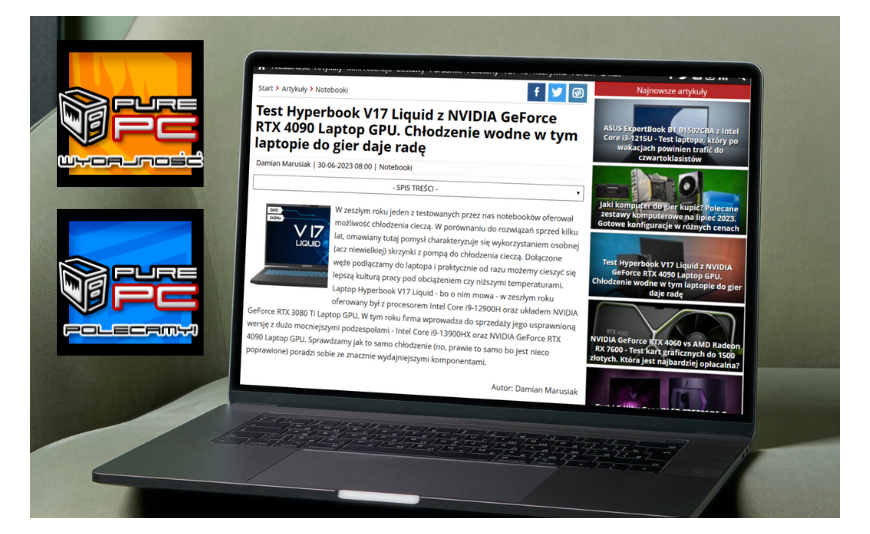Hyperbook V17 Liquid test with NVIDIA GeForce RTX 4090 Laptop GPU.
- 03 Jul, 2023
- Home , Reviews , Guides , Informations
- 0 Comments

Carrying handle
Solid straps for the back
Made of very durable material.
➠ CHECK
Improves performance
Prevents failures
Improves service life
➠ CHECK
Carrying handle
Solid straps for the back
Made of very durable material.
➠ CHECK
Improves performance
Prevents failures
Improves service life
➠ CHECK

Hyperbook SL606 in configuration with an Intel processor The water cooling in this gaming laptop does the trick.
Last year, one of the laptops we tested offered liquid cooling. Compared to solutions from a few years ago, the concept discussed here was to use a separate, although small, unit with a pump for liquid cooling. It was enough to connect the included hoses to the laptop and almost immediately you could enjoy better performance under load and lower temperatures. The laptop we're talking about is the Hyperbook V17 Liquid - last year it came with an Intel Core i9-12900H processor and an NVIDIA GeForce RTX 3080 Ti Laptop GPU. This year, the company launches its improved version with much stronger components - Intel Core i9-13900HX and NVIDIA GeForce RTX 4090 Laptop GPU. We check how the same cooler (well, almost the same, because it has been slightly improved) will cope with much more efficient components. NVIDIA GeForce RTX 4090 Laptop GPU is the flagship graphics chip of the current generation for portable computers. It should be noted, however, that it has nothing to do with the desktop GeForce RTX 4090 card. It was decided to keep the specifications similar to the desktop version of the GeForce RTX 4080. So we get a practically identical AD103 core with 9728 CUDA FP32 cores, 76 3rd generation RT cores and 304 cores Generation 4 Tensor. Ada Lovelace's architecture is the same for both desktops and laptops. We have more efficient CUDA cores, rebuilt RT cores for accelerating ray tracing calculations, and new Tensor cores with support for Frame Generator and Optical Flow Accelerator. The whole thing is complemented by 16 GB of GDDR6 memory, which works on a 256-bit bus. For testing, we received a Hyperbook V17 Liquid laptop, which is the most powerful model offered by the company. The maximum power of the NVIDIA GeForce RTX 4090 Laptop GPU is 175 W. The whole process was developed using a completely new and more advanced TSMC 4N lithography technology, which allowed to place over 45 billion transistors in a relatively small area of the AD103 graphics core. Thanks to this, it was possible to achieve an almost threefold increase in transistor packing density compared to the GA103 core in the Ampere architecture and the Samsung 8nm process.
Start typing to see products you are looking for.
Leave a Reply Cancel Reply